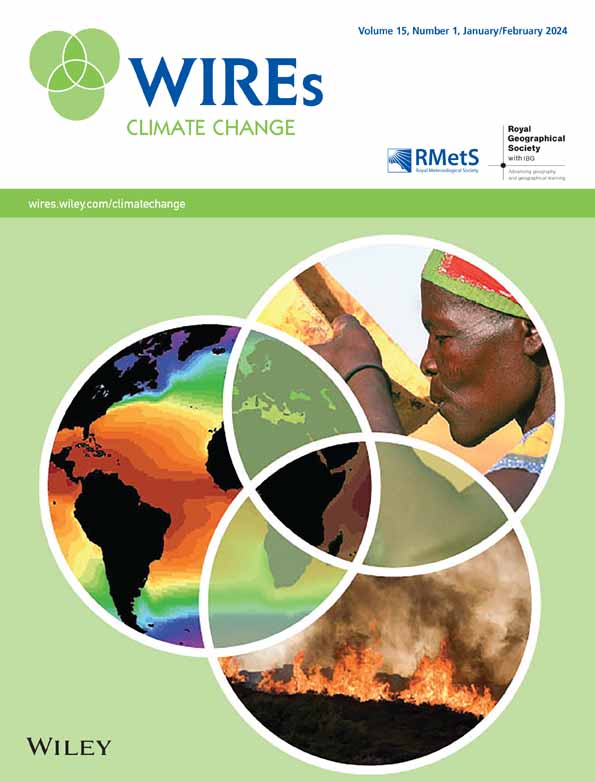全球土壤有机碳-气候相互作用:为什么尺度很重要
IF 10.3
1区 环境科学与生态学
Q1 ENVIRONMENTAL STUDIES
引用次数: 9
摘要
土壤有机碳(SOC)拥有最大的陆地碳储量,因为土壤条件和过程有利于土壤碳的持久性。SOC易受气候变化的影响,可能会跨越释放基于碳的温室气体的临界点,这意味着SOC与气候的巨大自放大相互作用。SOC持续性的估计具有挑战性,因为我们仍然缺乏广泛的机制见解。将机械细节从小尺度放大到大尺度是具有挑战性的,因为驱动因素无法以所需的分辨率获得。缩小规模是有问题的,因为许多建模研究指出SOC对气候变化的反应具有最高的不确定性,而模型本身在复制当代土壤特性和动力学方面存在困难。为了解决缩放问题,严格的过程导向似乎足够了。例如,Holdridge生命区(HLZ)分类是一个中尺度的气候分类框架,它提供了一种描述性方法,有助于识别SOC-气候相互作用的潜在热点和冷点。在所有HLZ建立协调的实验,但也包括多种全球变化驱动因素,有可能促进我们对调节SOC-气候相互作用和SOC持久性的一般原则的理解。因此,迫切需要针对实验和建模的区域性解决方案,这些解决方案可以更好地管理土壤和提供的生态系统服务。改进从过程理解相关尺度到决策尺度的“转换”是良好管理和预测我们最大陆地碳储量命运的关键。本文章由计算机程序翻译,如有差异,请以英文原文为准。
Global soil organic carbon–climate interactions: Why scales matter
Soil organic carbon (SOC) holds the largest terrestrial carbon stock because of soil conditions and processes that favor soil carbon persistence. Vulnerable to climate change, SOC may cross a tipping point toward liberating carbon‐based greenhouse gases, implying massive self‐amplifying SOC‐ climate interactions. Estimates of SOC persistence are challenging as we still lack broad mechanistic insights. Upscaling mechanistic details from small to larger scales is challenging because the driving factors are not available at the needed resolution. Downscaling is problematic as many modeling studies point to the highest uncertainties deriving from the SOC response to climate change, while models themselves have difficulties in replicating contemporary soil properties and dynamics. To bridge the problems of scaling, strict process orientation seems adequate. Holdridge Life Zones (HLZ) classification, as one example, is a climate classification framework at a mesoscale that provides a descriptive approach to facilitate the identification of potential hotspots and coldspots of SOC‐climate interaction. Establishing coordinated experiments across all HLZ, but also including multiple global change drivers, has the potential to advance our understanding of general principles regulating SOC‐climate interaction and SOC persistence. Therefore, regionally tailored solutions for both experiments and modeling are urgently needed and can lead to better management of soil and the ecosystem services provided. Improving “translations” from the scales relevant for process understanding to the scales of decision‐making is key to good management and to predict the fate of our largest terrestrial carbon stock.
求助全文
通过发布文献求助,成功后即可免费获取论文全文。
去求助
来源期刊

Wiley Interdisciplinary Reviews: Climate Change
METEOROLOGY & ATMOSPHERIC SCIENCES-
CiteScore
20.00
自引率
2.20%
发文量
58
审稿时长
>12 weeks
期刊介绍:
WIREs Climate Change serves as a distinctive platform for delving into current and emerging knowledge across various disciplines contributing to the understanding of climate change. This includes environmental history, humanities, physical and life sciences, social sciences, engineering, and economics. Developed in association with the Royal Meteorological Society and the Royal Geographical Society (with IBG) in the UK, this publication acts as an encyclopedic reference for climate change scholarship and research, offering a forum to explore diverse perspectives on how climate change is comprehended, analyzed, and contested globally.
 求助内容:
求助内容: 应助结果提醒方式:
应助结果提醒方式:


